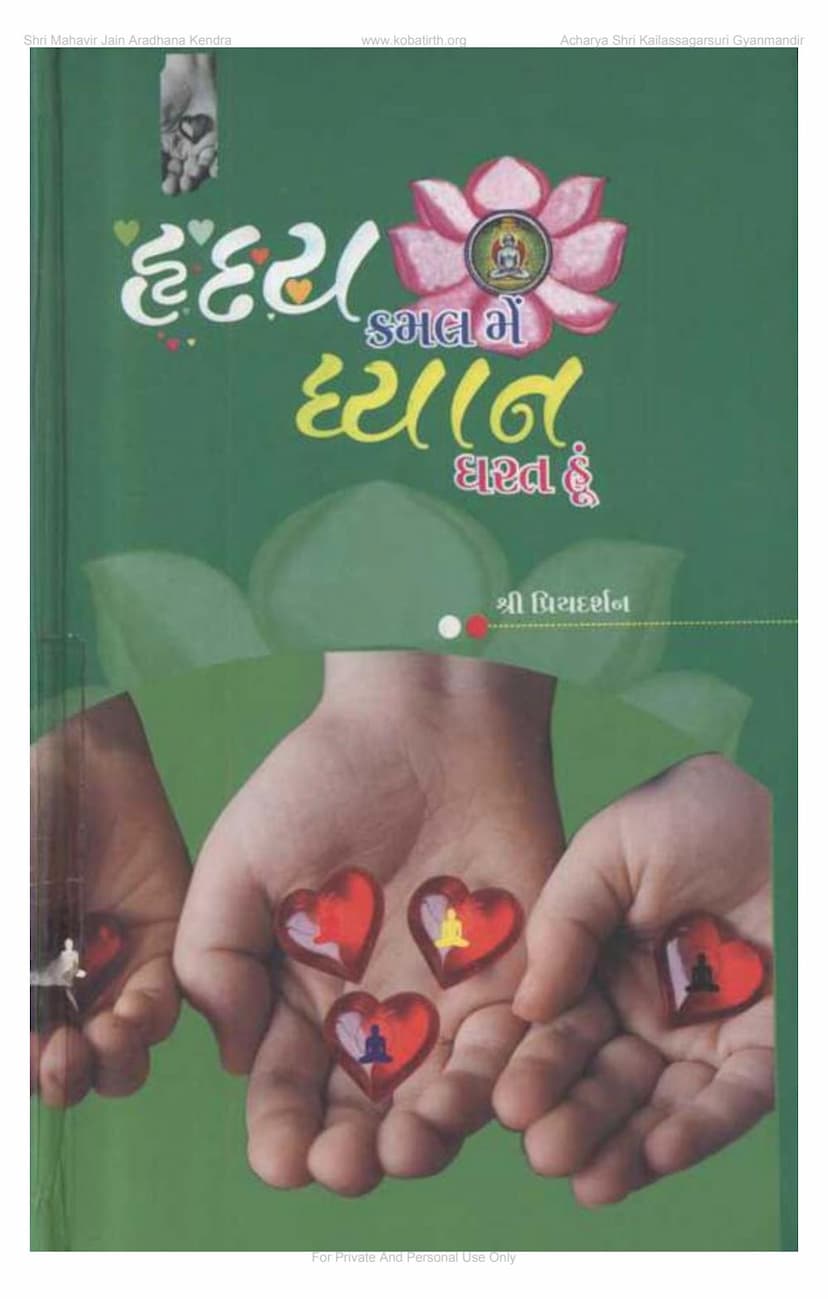Ruday Kamal Me Dhayan Dharat Hu
Added to library: September 2, 2025

Summary
Here's a comprehensive summary of the Jain text "Ruday Kamal Me Dhayan Dharat Hu" (Meditating in the Lotus of the Heart), authored by Acharya Shri Vijay Bhadraguptasurishwarji (Shri Priyadarshan), and published by Mahavir Jain Aradhana Kendra Koba:
This book is a collection of discourses by Acharya Shri Vijay Bhadraguptasurishwarji, also known as Shri Priyadarshan. The title itself, "Meditating in the Lotus of the Heart," indicates the central theme: focusing one's meditation within the heart. The discourses are based on the Navapadji (Nine Sacred Entities of Jainism), suggesting a deep dive into these core principles for spiritual practice.
Key Aspects and Content:
-
Author and His Legacy: The book highlights the author, Acharya Shri Vijay Bhadraguptasurishwarji, as a prolific writer and spiritual guide whose literature is appreciated not only within the Jain community but also by others. His passing in 1999 led to the re-publication of his works by the Shri Mahavir Jain Aradhana Kendra, Koba, to ensure his teachings remain accessible. The re-publication is dedicated to the memory of Seth Shri Niranjan Narottam bhai and supported by the Seth Shri Narottam bhai Lal bhai family.
-
Focus on Meditation (Dhyana): The core of the book revolves around the practice of meditation, specifically directing it towards the "heart lotus." It emphasizes the importance of connecting with the divine within, through focused meditation.
-
The Navapadji: The discourses are structured around the Navapadji, which are foundational to Jain philosophy and practice. These likely include Arihant, Siddha, Acharya, Upadhyaya, Sadhu, Samyak Darshan (Right Faith), Samyak Gyan (Right Knowledge), Samyak Charitra (Right Conduct), and Samyak Tapa (Right Austerity). The book likely delves into the significance of each pad and provides guidance on meditating upon them.
-
The Significance of the Heart Lotus: The "heart lotus" is presented as the sacred space within for meditation. The text likely explains how to cultivate this inner space and focus the mind there, connecting with the divine essence.
-
Path to Spiritual Growth: The book aims to guide readers towards spiritual upliftment, inner peace, and ultimately, liberation (moksha). It likely connects the practice of meditation on the Navapadji to the path of shedding karmas and achieving spiritual purity.
-
Elaboration on Meditation Techniques and Principles: The extensive excerpts cover various aspects of meditation:
- Developing Faith: The importance of faith in God (Parmatma) and the spiritual path is stressed, using examples of how faith is built in doctors and lawyers.
- The Role of Time and Season: It discusses how different religious practices, including meditation, are suited to different times of the day and seasons, citing the example of meditation in Asho month.
- Physical and Mental Preparedness: The text emphasizes the need for a healthy body and a calm, focused mind for meditation, linking it to diet (Ayambil Tapa) and the purification of the mind through knowledge.
- The Object of Meditation (Dhyeya): It highlights that the focus of meditation is crucial, distinguishing between beneficial (Prashasta) and harmful (Aprashasta) meditation. The Navapadji, particularly the Siddhachakra, is presented as the highest object of meditation.
- The Story of Mayanasundari: A significant portion of the text is dedicated to the story of Mayanasundari, illustrating how true knowledge, unwavering faith, and virtuous conduct (like her devotion and equanimity) enable one to face adversities and find solace through spiritual practice. Her story serves as a powerful example of the transformative power of meditating on the Navapadji.
- The Nine Padas in Detail: The book systematically explores each of the nine sacred entities (Navapad), explaining their form, significance, and the process of meditating on them. This includes intricate details about the Siddhachakra yantra and its visualization.
- The Role of the Guru and Faith: The teachings highlight the importance of a Guru's guidance and the necessity of sincere faith and devotion for successful spiritual practice.
- The Importance of Internal Transformation: While external rituals are mentioned, the emphasis is on internal purification, detachment, and the cultivation of virtues like compassion, equanimity, and non-violence.
- The Ninety-Nine Titles and Their Meaning: The text details the significance of the Navapad as names of the liberated souls, describing their qualities and the path they represent.
- The Relationship between Tapa (Austerity), Brahmacharya (Celibacy), and Meditation: The interconnectedness of these practices for spiritual progress is discussed.
- The Qualities of a Devotee: The book outlines the characteristics of an ideal devotee and practitioner, emphasizing qualities like forgiveness, self-control, peace, purity, and absence of negative thoughts.
- The Practice of Meditation: It provides practical advice on how to meditate, including the visualization of the heart lotus, the colors associated with different Padas, and the use of mantras.
-
The Mission of the Shri Mahavir Jain Aradhana Kendra: The book also serves to introduce the readers to the Shri Mahavir Jain Aradhana Kendra, Koba, and its various activities. This includes the magnificent Mahavirālay (temple complex), the Guru Mandir, the Gyan Mandir (a research and knowledge center with extensive libraries and museums), Aram Bhawan (for spiritual retreats), Dharmashala (guest accommodation), Bhojanshala (community kitchen), and Shrut-Sarita (bookstore). It also mentions the Vishvamaitri Dham at Borij Tirth.
In essence, "Ruday Kamal Me Dhayan Dharat Hu" is a profound spiritual guide that aims to illuminate the path to self-realization through the focused practice of meditation on the Navapadji, emphasizing inner purity, faith, and the transformative power of spiritual knowledge, all presented through the eloquent teachings of Acharya Shri Vijay Bhadraguptasurishwarji.